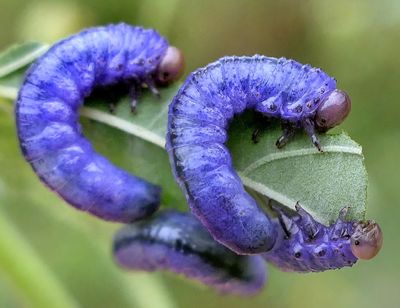
Neoptilia tora (argid sawfly larvae)
| The purple color on these larvae results from a waxy coating that develops on older insects. Younger individuals are green. Adult sawflies are a type of stingless wasp. |
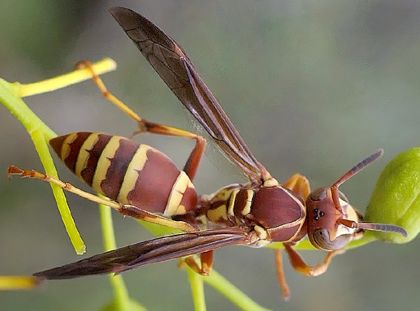
Polistes exclamans (paper wasp)
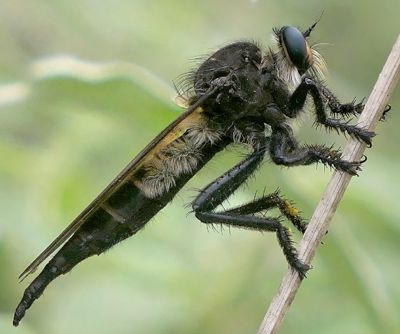
Promachus painteri (robber fly)

Unknown sp. (tachinid fly)
| Tachinidae is one of the largest families of flies, which is partly why so many times I cannot identify many of them. It is even difficult to separate some species from other fly families, such as Sarcophagidae (flesh flies) and Muscidae (house flies, etc.). Sometimes, large bristles on the abdomen are a helpful clue. |

Trupanea sp. (fruit fly)
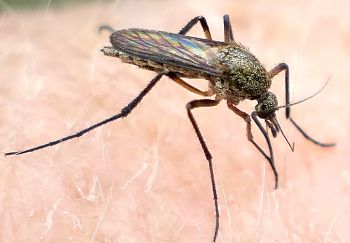
Psorophora cyanescens (mosquito)
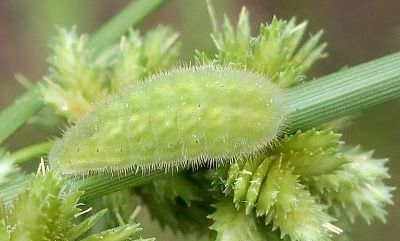
Strymon melinus (gray hairstreak larva)
| Most butterfly caterpillars feed specifically on only a limited selection of host plants. Gray Hairstreaks prefer flowers so this individual might have simply wandered onto the sedge plant with no urge to eat it, perhaps searching for a safe place to pupate. The Clouded Skipper caterpillar shown below often, as shown here, feeds on Johnson Grass. |
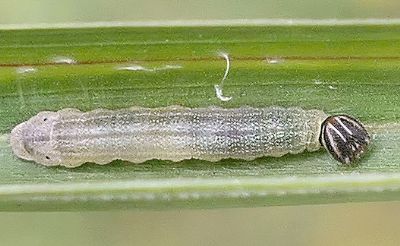
Lerema accius (clouded skipper larva)

Enallagma basidens (double-striped bluet)
| Pale colors and a thick abdomen are two characteristics that identify this individual as a female. The dots on her underside are water mite larvae. |
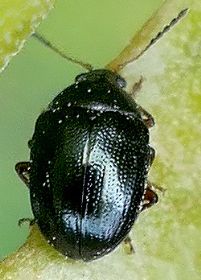
Brachypnoea sp. (leaf beetle)

Acmaeodera mixta (metallic woodborer)

Odontocorynus sp. (weevil)
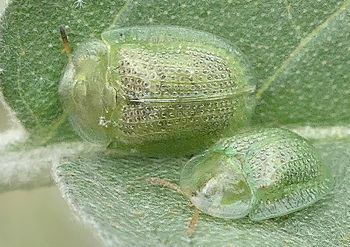
Gratiana pallidula (eggplant tortoise beetles)

Olla v-nigrum (ashy gray lady beetle pupa)
| The head of this pupa is at left. Legs are curled up underneath and the extended appendages visible to the lower right are part of the molted larval skin crumpled at the back end attachment of the pupa. |
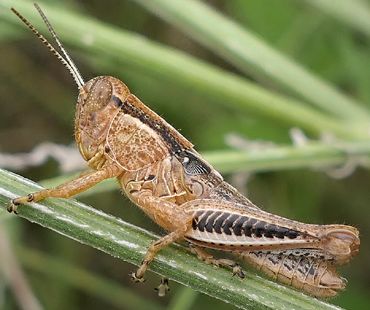
Melanoplus differentialis (differential grasshopper nymph)
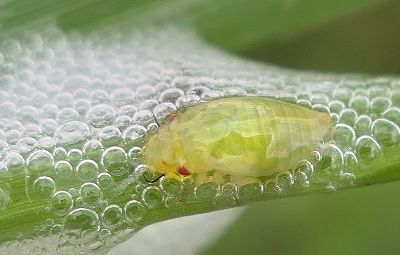
Unknown sp. (spittlebug nymph)
| Excreting copious amounts of excess liquid as it feeds on plant xylem, a spittlebug nymph forces air out its back end from a tube under its abdomen to create the bubbly foam. It's sort of like pee and farts. |
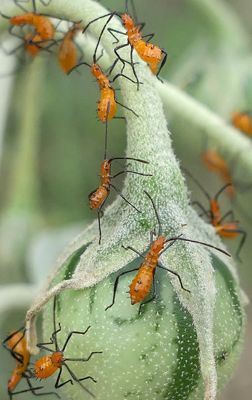
Leptoglossus phyllopus (eastern leaf-footed bug nymphs)

Liorhyssus hyalinus (hyaline grass bug)
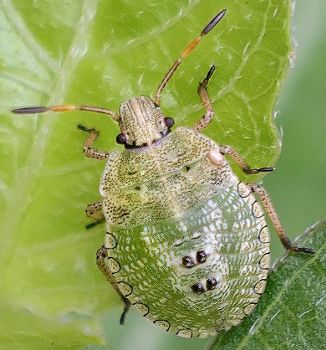
Euschistus sp. (stink bug nymph)

Mecidea major (grass stink bug)
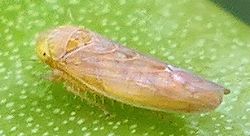
Ollarianus strictus (leafhopper)

Scaphytopius sp. (leafhopper)
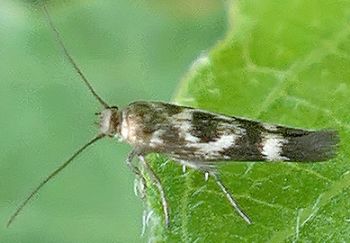
Scythris trivinctella (banded scythris moth)
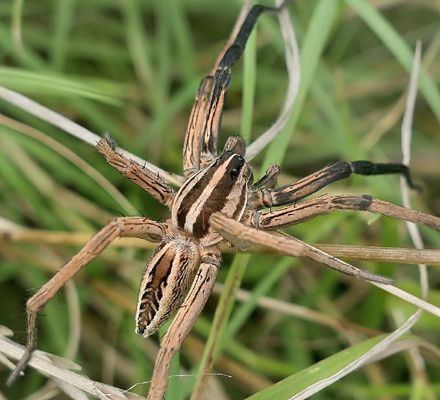
Rabidosa rabida (rabid wolf spider)
| While some spider species have tiny males compared to large females, wolf spider sexes tend to be about the same size. This large individual's black front legs indicate he is a mature male. |
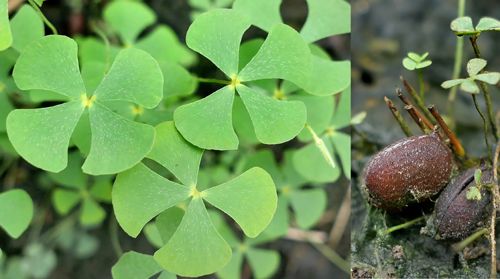
Marsilea vestita (hairy water clover)
| Not at all related to true clover (a legume), this plant is actually a wetlands fern. Unlike most ferns, the spores are not produced on the undersides of the leaves but instead form in brown capsules at the plant's base, as shown at right. When submerged, the capsule splits open to release the spores. |
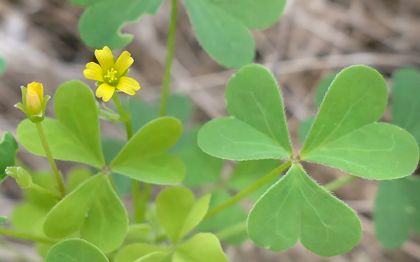
Oxalis stricta (yellow woodsorrel)

Parietaria pensylvanica (Pennsylvania pellitory)
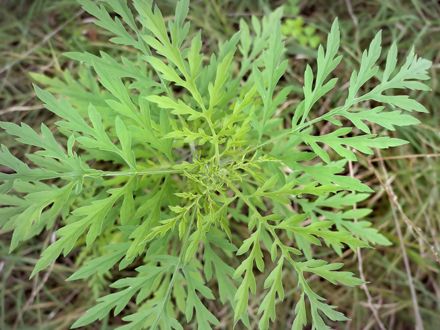
Ambrosia artemisiifolia (annual ragweed)
| Because Giant Ragweed is so conspicuous in our area, it is easy to overlook the minute blossoms of this common yard weed as a major contributor to the wind-borne pollen that causes allergies in the autumn. |
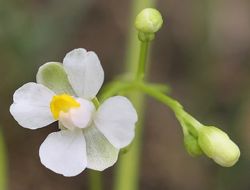
Cardiospermum halicacabum (balloon vine)
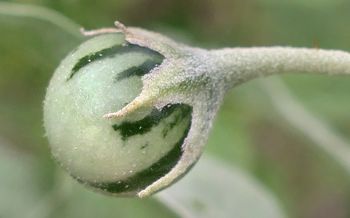
Solanum elaeagnifolium (silverleaf nightshade)
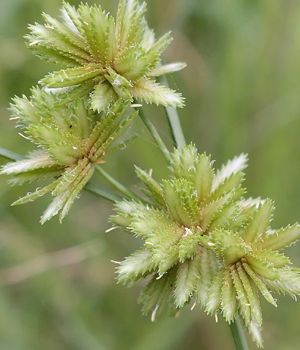
Cyperus acuminatus (tapertip flatsedge)
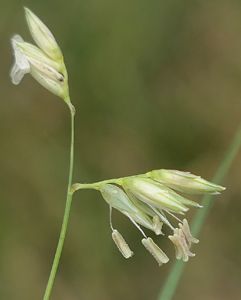
Bouteloua dactyloides (buffalo grass)
| Unlike many grass species, Buffalo Grass is dioescious, meaning that plants are either male or female. Because an individual spreads through stolons, entire colonies can be just one sex. These are male flowers; they have only stamens, no pistil. |
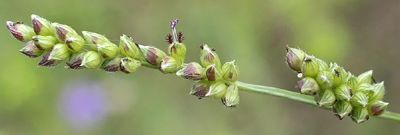
Echinochloa crus-galli (common barnyard grass)
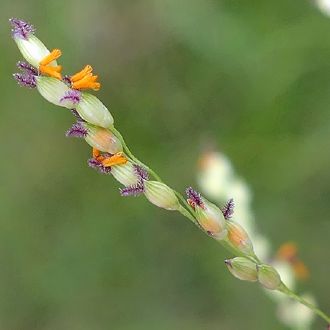
Panicum coloratum (kleingrass)

Panicum virgatum (switchgrass)
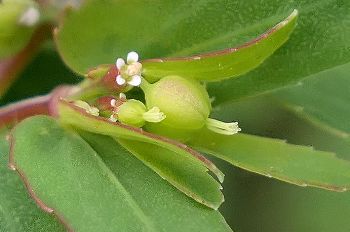
Euphorbia hyssopifolia (hyssop spurge)

Mimosa microphylla (littleleaf sensitive-briar)

Clematis drummondii (old man's beard)

![]()